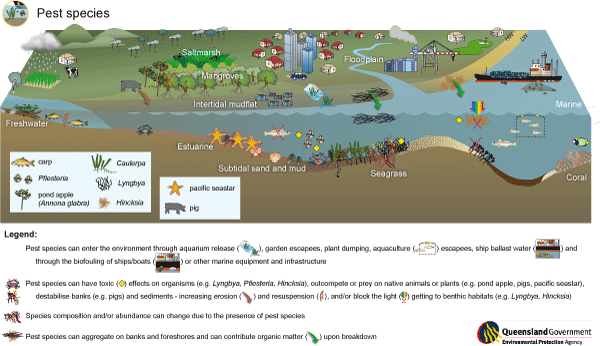Our current best conceptual understanding of the stressor ‘pests’ is shown in Figure 1.
Figure 1. Potential causes of a change to pests and the condition responses observed as a result of this change.
Exotic species enter the system as escapees from aquaculture, aquaria or gardens, and during transport, attached to hulls, in ballast water or via dredge spoil. Pest species can have significant effects on a system, resulting in the loss of native species, reductions in biodiversity and alterations to habitat. Examples of pest species in Australian estuarine/coastal waters include the infestation of Port Philip Bay with the giant sabellid worm and the occurrence of a toxic dinoflagellate species and the pacific seastar in the Derwent estuary in Tasmania.
This stressor may be applied to intertidal and subtidal (i.e. estuarine and marine) areas, where pest species are called ‘marine pests’ and include flora and fauna. The stressor may also be applied to terrestrial parts of the coast, where pest species are usually divided into ‘vegetation species’ (i.e. weeds) and ‘vertebrate pests’.



